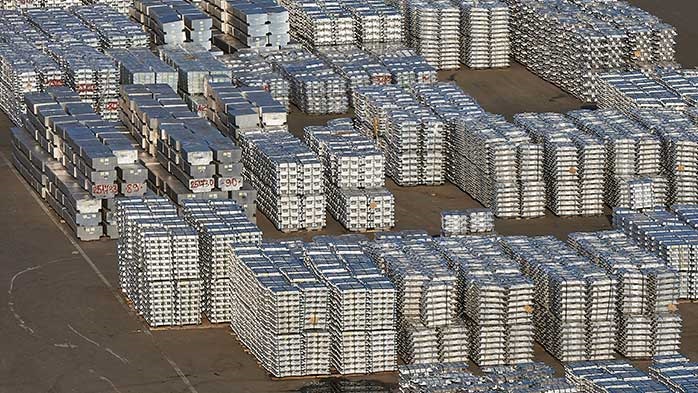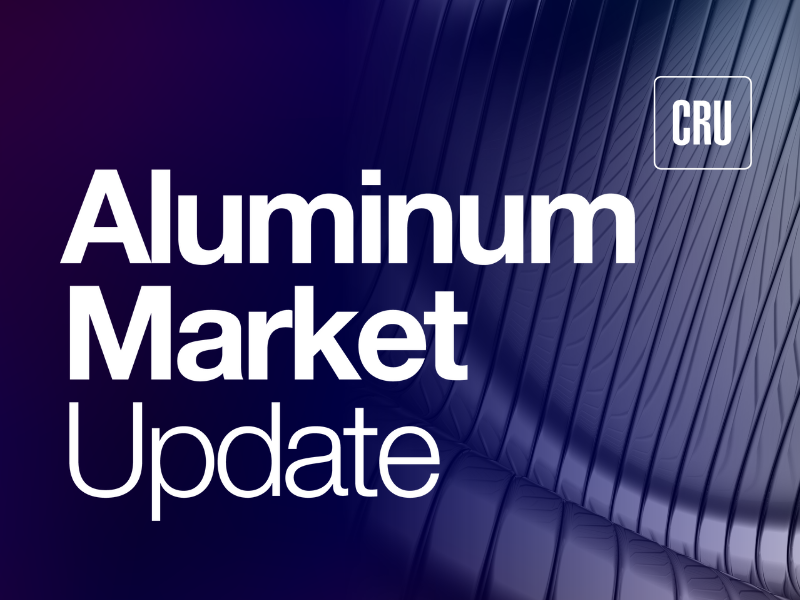AMU

May 16, 2025
Wittbecker on Aluminum: Middle East trades and $4B smelter for Oklahoma
Written by Greg Wittbecker
President Trump’s trip to the Middle East has had a heavy emphasis on commercial dealmaking with some politics thrown in for good measure. So far, the major deals that have been announced have been impressive.
Saudi Arabia: a $142 billion arms sale; Nvidia will bring 18,000 of its Blackwell GPU to the Kingdom to enable them to develop regional leadership in AI; Amazon plans to build a $5 billion AI Zone; Supermicro struck a $20 billion deal with DataVolt.
Qatar: Boeing sale of $96 billion worth of aircraft to Qatar Airways
United Arab Emirate (UAE): A total of $200 billion in commercial deals which include a $4 billion aluminum smelter for Oklahoma.
The EGA aluminum smelter emerges
Since March 21 when UAE announced plans to invest $1.4 trillion in the US, including an aluminum smelter, the market has been waiting for details. Now, we have some.
Emirates Global Aluminium (EGA) will build a greenfield, 600,000 metric ton/year smelter in Tulsa, OK. The facility was announced by Gov. Kevin Stitt late May 15 and will bring 1,000 direct jobs and 1,800 indirect jobs. Feasibility studies are underway, and construction could start by the end of 2026, with first metal “by the end of the decade,” per press releases. That would imply about four years of construction which is about right for World ex China projects of this scale.
The smelter will be built 350 acres within the Tulsa port of Inola. It is expected to be producing a full array of value-added products, comparable to what EGA produces in the UAE. This will bring new billet and foundry capacity to the market, plus potentially sheet ingot and higher purity ingot.
The location is strategic. By locating in the Tulsa port, it will have year-round access to the Arkansas River to import alumina, carbon and coal tar pitch materials needed in production. It will also have the option for outbound barge shipments of aluminum that could go north to the upper Mississippi and Ohio River basins.
The location in Oklahoma presumably means the facility will initially be powered by gas. Oklahoma makes sense for this as there are significant natural gas assets in the state. Oklahoma ranks in the top five nationally for natural gas production with a well-established pipeline network.
While gas is likely the base load for this facility, Tulsa is also ideally situated to capitalize on Oklahoma’s leading position in wind power generation. The state ranks third nationally, trailing only Texas and Iowa. Wind power supplies over 42% of the state’s net power generation.
No comment on exemptions
Conspicuously absent from the announcement was any statement about the UAE receiving exemption from Section 232 for its ongoing imports to the US.
We had speculated that one of the negotiated conditions for the smelter would have been a 5- to 10-year exemption from the 25% tariff. This would have allowed EGA to continue its large (500,000-600,000 metric tons/year) imports without paying the hefty duties on it.
An exemption could have conservatively been worth $400 million/year in avoided costs, and over five to 10 years would effectively have underwritten the cost of the new smelter. No such exemption was announced. However, we would not rule that out still.
Recall in January 2021, just before Trump left office, he made a $23 billion arms deal with the UAE and gave them exemption from Section 232. President Biden promptly rescinded both the arms deal and the exemption when he took office. However, this precedent may still set the stage for a 2025 exemption.
The energy question
The US Aluminum Association has released a comprehensive white paper examining the challenges and opportunities to increase total aluminum supply for the US.
The association addressed the three paths to increased self-sufficiency: restarting idle primary capacity, building new primary capacity, and leveraging recycled/secondary opportunities.
Not surprising, the major challenge to either restarting or building primary capacity pivots around finding affordably priced energy. That was a contributing cause to the loss of over 30 smelters in the past 45 years and most recently, the curtailments of Century Hawesville, Mt Holly, and Magnitude 7’s New Madrid smelter.
The energy problem is compounded by the enormous demand for electricity from the data centers supporting AI growth. These data centers have no apparent limit to the prices they are willing to pay for power, having paid over $100 per megawatt hour in some cases. A competitive price for an aluminum smelter would need to be sub-$40. So, there is a massive gap. This is why Century has been frustrated in their efforts to find the power for their proposed smelter.
On a more positive note, the opportunities to increase secondary aluminum are very compelling. There is an abundant supply of zorba (shredded automotive aluminum) and used beverage containers (UBC).
The constraint to using this supply is more efficient sortation of the zorba and a vastly improved collection effort in the UBC. Capital costs to build and operate secondary aluminum are extremely attractive. Secondary capacity is about 25% of the cost of building a new primary smelter and consumes 5% of the energy needed for primary metal.
A rational plea for Canadian primary supply
The association argued for keeping Canadian primary aluminum in play, stating Canadian metal was a highly secure supply chain and fairly priced. Canadian aluminum did not contribute to the demise of the US domestic industry and continues to play a critical role in keeping our downstream, value-added aluminum plants well supplied and able to capitalize on their competitive advantage in rolling, extruding and other additive manufacturing processes.
It will be interesting to see how the message is received in government circles and whether proper attention is given to the systemic problem of energy that we have called out in prior articles.
Editor’s note
This is an opinion column. The views in this article do not necessarily reflect those of SMU. We welcome you to share your thoughts as well at info@steelmarketupdate.com.


